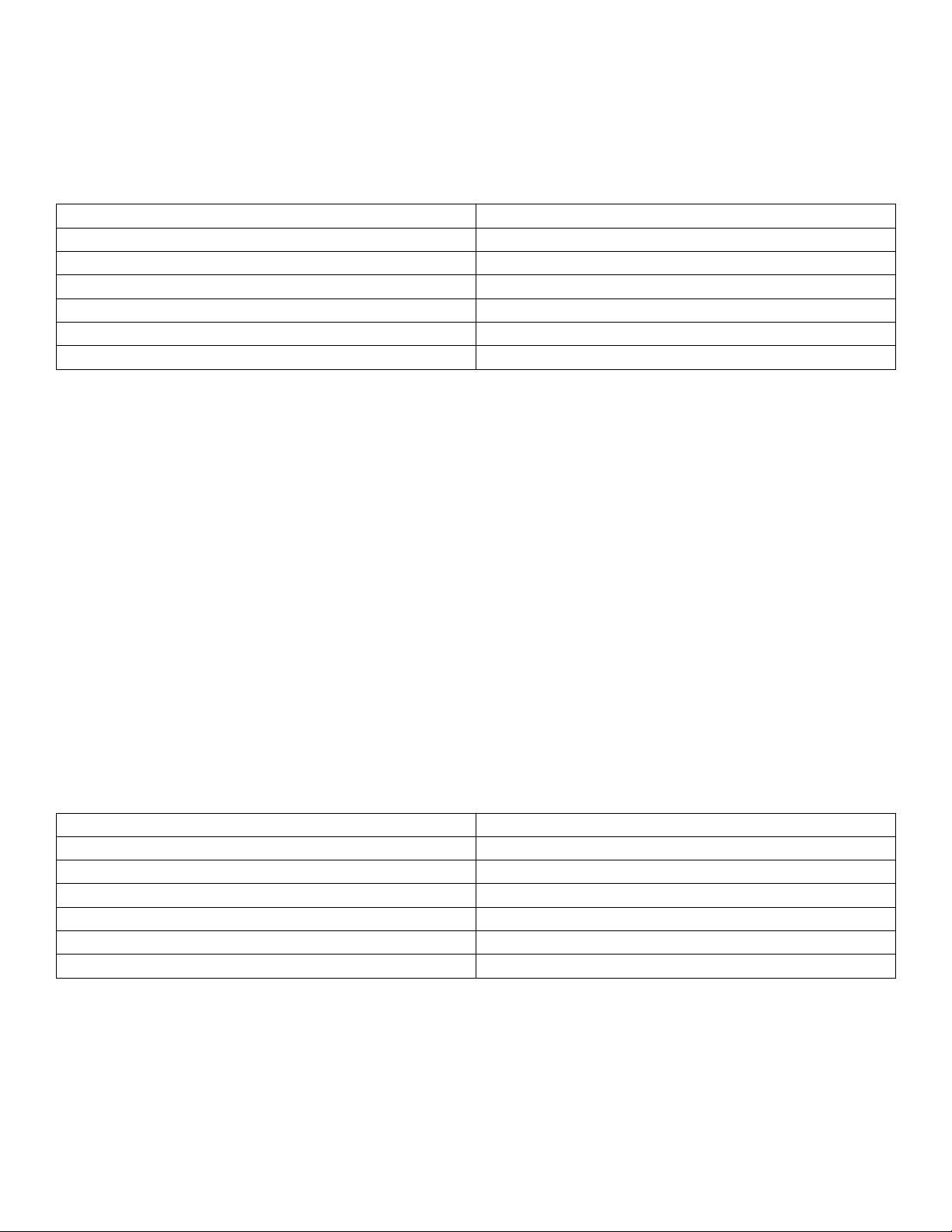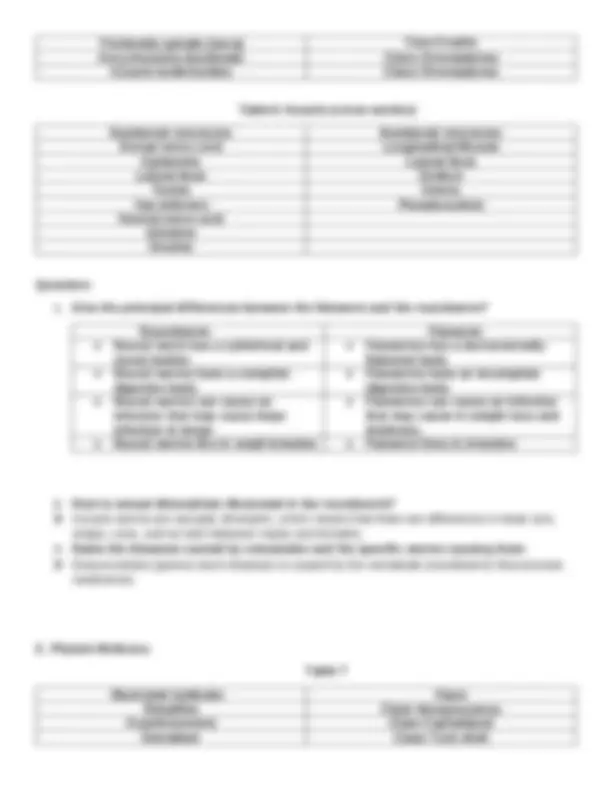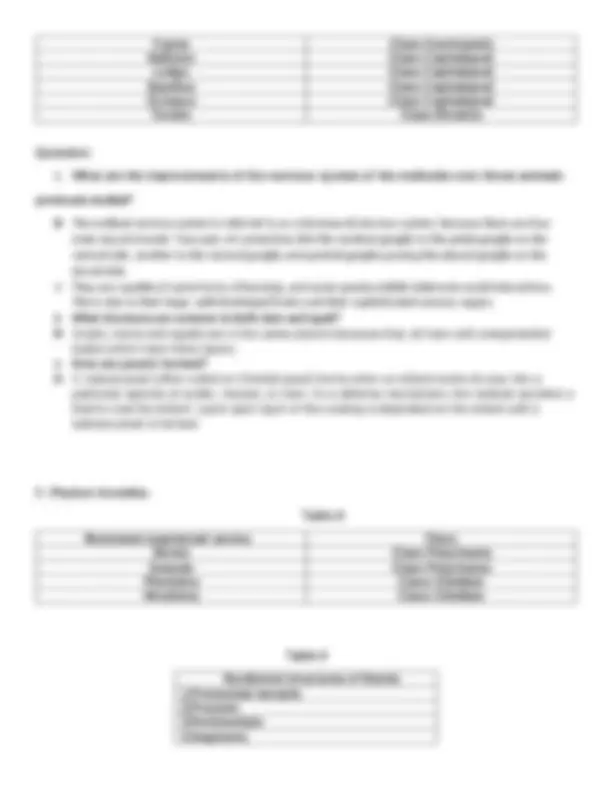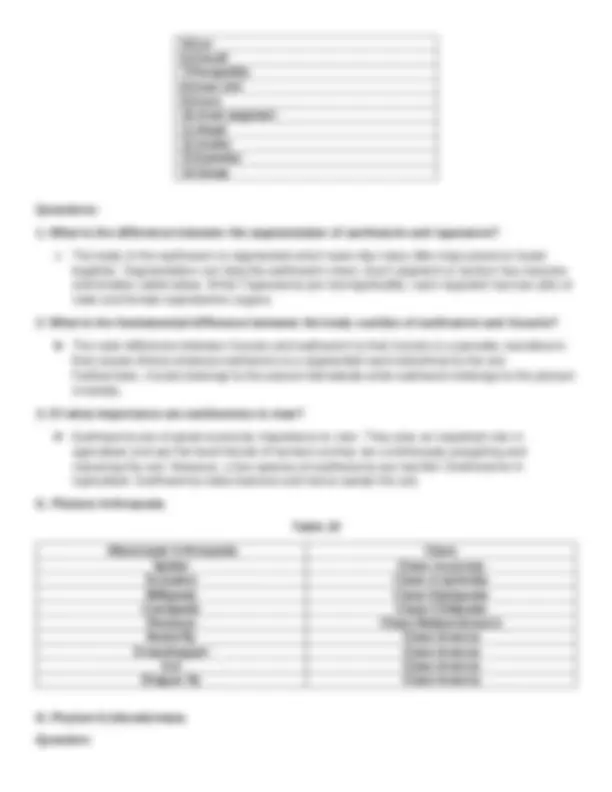






Study with the several resources on Docsity

Earn points by helping other students or get them with a premium plan


Prepare for your exams
Study with the several resources on Docsity

Earn points to download
Earn points by helping other students or get them with a premium plan
Community
Ask the community for help and clear up your study doubts
Discover the best universities in your country according to Docsity users
Free resources
Download our free guides on studying techniques, anxiety management strategies, and thesis advice from Docsity tutors
This is a assignment with answer that talks about the animal diversity. Feel free to download
Typology: Assignments
1 / 8

This page cannot be seen from the preview
Don't miss anything!





A. Phylum Porifera TABLE 1 ILLUSTRATED SPONGES CLASS Leucosolenia Class Calcispongiae Grantia Class Calcarea Euplectella aspergillum Hexactinellid Spongilia Demosponge Euspongia Officinalis Demosponge Leiodermatium Demospongiae Questions:
1. What are the spicules of sponges for? Spicules functions is to support, and microscleres, which function is to protect and also aid support. 2. How are sponges classified? There are three classes within the phylum porifera: Calcerea, Desmospongia, and Hexactinellida. Sponges are divided into these classes based primarily on the composition of their spicules and skeletal fibers. 3. Why are sponges considered as the simplest form of animal? Sponges is considered as the simplest form of animal because their bodies are not organized in organs, system or even tissues instead, sponges are made group of cells that work together to meet the the daily needs of the sponges. B. Phylum Cnidaria TABLE 2 Illustrated Cnidarian CLASS Hydra Class Hydrozoa Obelia Class Hydrozoa **Nepthya Class Cubozoa Acrometoides Class scyphozoan Isis Class Anthozoa Metridium Sea anemones and corals QUESTIONS:
2. What are the significant features that make phylum cnidaria a more advanced group than the sponges? What make phylum cnidaria significant than sponges are that aside from having a specialize cells, they also have tissues and radial symmetry. 3. What structural characteristics differentiate the various classes of cnidarians? Cnidaria are all aquatic organisms, with the majority of them being marine. They all have stinging cells called nematocysts on their tentacles, which they employ to catch food. The ectoderm and endoderm of cnidarians' bodies are divided by a jelly-like layer termed the mesoglea. Radial symmetry is found in the majority of Cnidarians. C. Phylum Platyhelminthes TABLE 3 Illustrated Flatworms Class Planaria Class Turbellaria Fasciola hepatica Class Trematoda Taenia solium Class Cestoda TABLE 4 Numbered structures of the Scolex Numbered structures of the Proglottid Rostellum Testes Hooks Genital pore Suckers Uterus Neck Ovaries QUESTIONS: 1. What makes Planaria a more advance animal than the cnidarians? Planaria is more complex than cnidarians it is because planaria have an extraordinary ability to regenerate lost body parts. 2. Which has a more complicated life cycle, Planaria or Fluke? Why? For me planaria is most complicated life cycle than the life cycle of flukes, because the planaria life are asexual and they will constantly produce another worm that comes from their own body even though they have ability to regenerate it is considered to be complicated. 3. Why are parasitic worms not digested in the digestive tract of the host? Due to their parasitic mode of life these worms completely lost their digestive apparatus but have a well-developed reproductive system and special organs that help them attach to the host's tissues. They also needed a mechanism to protect themselves from intestinal substances, specifically from digestive enzymes. D. Phylum Nemathelminthes TABLE 5 Illustrated Roundworms Class
Cypea Class Gastropoda Haliotes Class Cephalopod Loligo Class Cephalopod Nautilus Class Cephalopod Octopus Class Cephalopod Teredo Class Bivalvia Question:
1. What are the improvements of the nervous system of the mollusks over those animals previously studied? The mollusk nervous system is referred to as a tetraneural nervous system, because there are four main neural strands: Two pairs of connectives link the cerebral ganglia to the pedal ganglia on the ventral side. another to the visceral ganglia and parietal ganglia passing the pleural ganglia on the dorsal side. They are capable of some forms of learning, and some species exhibit elaborate social interactions. This is due to their large, well-developed brains and their sophisticated sensory organs 2. What structures are common to both clam and squid? Snails, clams and squids are in the same phylum because they all have soft unsegmented bodes which have three layers. 3. How are pearls formed? A natural pearl (often called an Oriental pearl) forms when an irritant works its way into a particular species of oyster, mussel, or clam. As a defense mechanism, the mollusk secretes a fluid to coat the irritant. Layer upon layer of this coating is deposited on the irritant until a lustrous pearl is formed. F. Phylum Annelida Table 8 Illustrated segmented worms Class Nereis Class Polychaeta Serpula Class Polychaeta Pheretina Class Clitellate Hirudinea Class Clitellate Table 9 Numbered structures of Nereis 1.Prostomial tentacle 2.Prostom 3.Peristomium 4.Segments
5.Eye 6.Annuli 7.Parapodia 8.Anal cirri 9.Anus 10.Anal segment 11.Head 12.Atoke 13.Epitoke 14.Setae Questions:
Bufo marinus Class Amphibians Cosymbotus Class Sarcopterygii Parrot Class Reptilian Felis domestica Class Mammal Question:
Class Sarcopterygii Bony endoskeleton Lobe-finned Coelacanth Class Amphibians tetrapod's – 4 limbs Ectotherm Has a lungs of adult Frogs Class Sauropsida (reptiles) Lungs throughout life Amniotic eggs Alligator Class Aves Feathers present Forelimbs are wings Birds Class Mammals Hairy bodies Mammary glands produce milk to nourish young Neocortex Bears